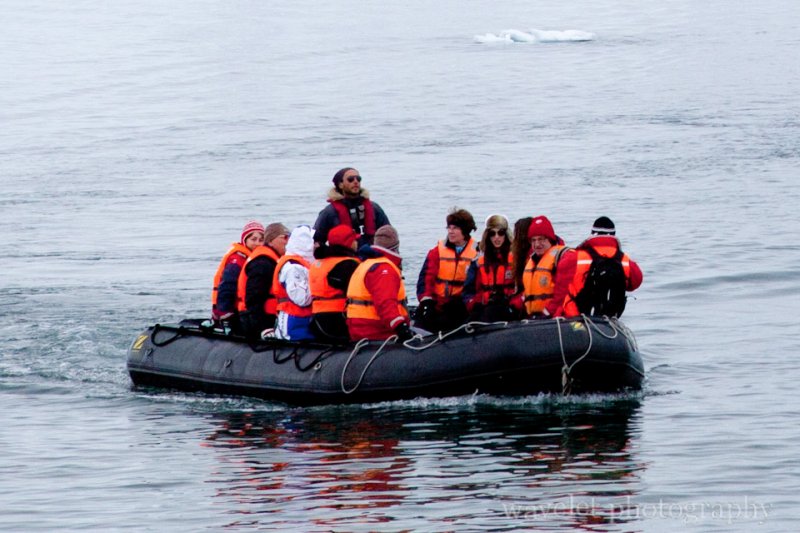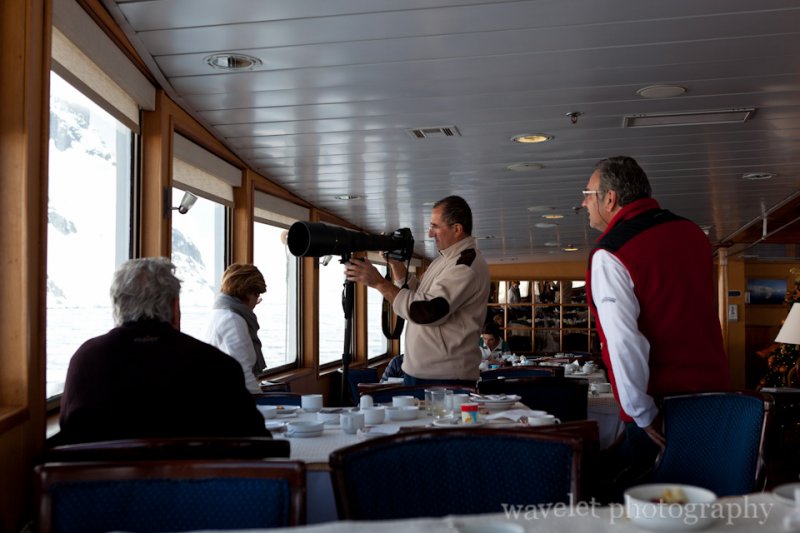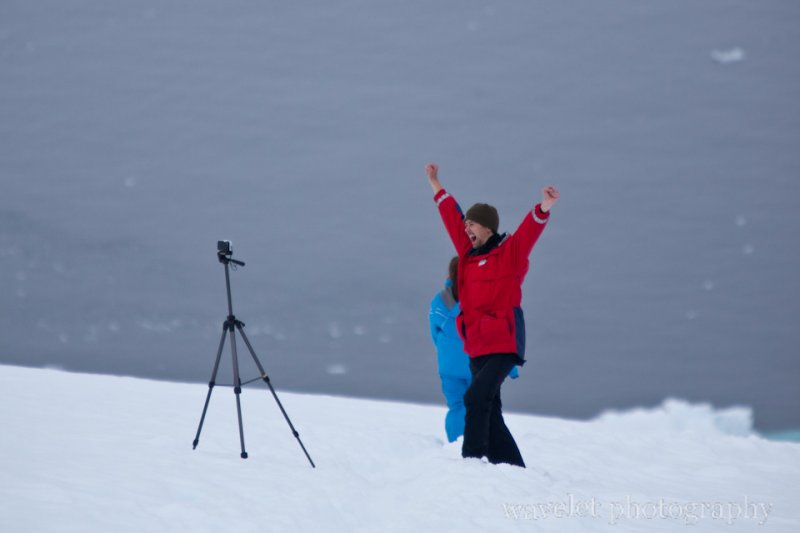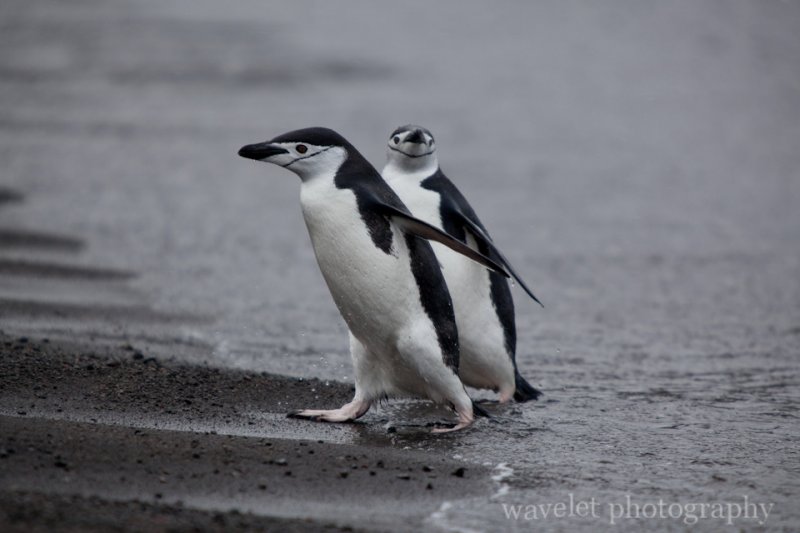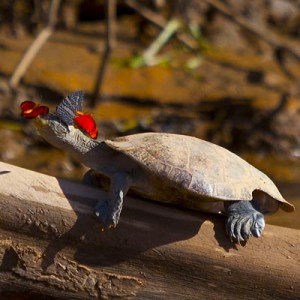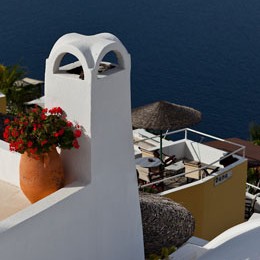In this post, I will cover our preparation on clothing and cameras equipment.
Clothing
We were blessed with good weather in Antarctica. The temperature stayed above the freezing point most of time. However, “volatile” is often used to describe the weather in the continent. You’d better prepare for the worst.
Gears needed for the Antarctica trip are very similar to those used in Ski. Once our trip was booked, we found ourselves shopping at REI on every weekend. Several articles warned us not to wear cotton because they don’t wick the moisture away quickly enough. Instead, silk or polyester is recommended. Another key thing is to dress in layers, 3 to 5 in total. It allows you to adjust your clothing more easily when weather changes. Because you are going to wear parka and life vest while going ashore, dressing in layers keeps you warm and, at the same time, less bulky getting in and out of zodiacs.
Here is a list of things you might need in Antarctica,
- Waterproof pants: This is a must, because most of landings are wet landing, means you will step into the water and walk to the land.
- Long, thermal underwear:
- Fleece pants and jackets: The thermal underwear and fleece are the most useful clothes we brought. I have been wearing the same one fleece in our entire Antarctica trip.
- Gloves: A pair that is warm and a thin pair used when taking pictures.
- Socks: A thin pair under a thick pair.
- Hat, scarf or neck warmer: They keep you warm when it’s windy.
- Sunglasses: To make you look cool in photos. 🙂
- Goggle: Goggle is not absolutely necessary but it helps in wind or snow. The problem is that it tends to get foggy if you wear scarf at the same time, unless it has anti-fog coating. Pick the OTG (over the glasses) version if you wear glasses.
- Windproof jacket: You will need a windproof jacket while walking on the deck outside. Waterproof is not really necessary because the parka provided by the ship is already thick and warm enough.
- Boots: Boots are also provided on the ship so you don’t have to bring your own, unless yours is really good-looking. Keep in mind though, not only will you walk in the water but also over penguins’ poops.
- Waterproof shoes: Not necessary. We wore boots all the time while ashore.
With all these stuff, we still managed to travel without any luggage. Packing less is one of our travel secrets. This is all we have.
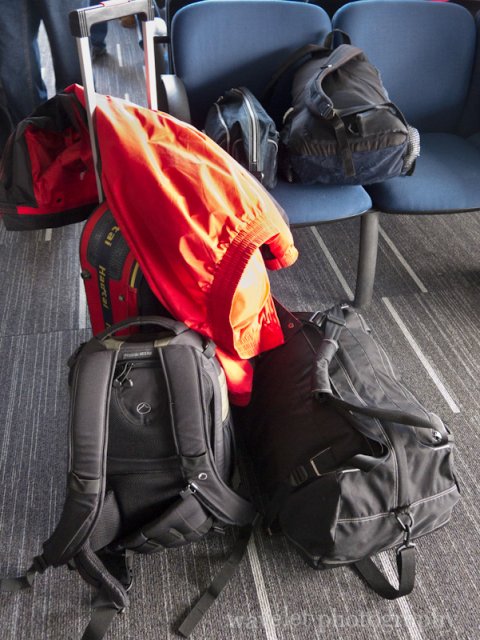
Cameras and Electronics
It is said that a photo is only as good as the photographer not the camera, but Antarctica is the place that you should take your best cameras to.
Here is a list of photography related gears I brought with me,
- Canon 5D Mark II
- Canon EF 24-70mm f/2.8L USM
- Canon EF 70-200mm f/2.8L IS USM
- Canon 2x EF Extender II
- Canon PowerShot S95
- Slik Sprint Pro II GM Tripod
- Filters: GND, ND, Polarizer. They were used in TDP and TDF, but not in Antarctica.
- Compact Flash: About 120GB. I copied all RAW files to the netbook and never deleted one from the flash cards. I ended up using around 70GB with 3000 pictures.
- Asus Eee Netbook: I always brought it to our trips to backup photos and checking emails. It’s too slow for reviewing photos though.
- Lowepro Flipside 400 Camera Backpack
- Kindle: I found myself very effective in reading on the cruise. I finished the book that usually takes 3 months in 4 days.
- Canon ERC-E4S Rain Cover
- Gregory Accessories Rain Cover
- Lens Pen, Air Blaster
It’s very important to protect your camera gears from salt water. At first, I ordered a SealLine Boundary Pack (70L) but it looked like an overkill to me so I changed it to Gregory Rain Cover. I didn’t use it eventually but at one time I did pull out the built-in cover of the Lowepro bag on the zodiac. I also used the camera rain cover once while ashore; other time, I just used my body as the shield and wipe the snow with my gloves after each shot. It could be a totally different story if the weather was bad or the sea was choppy. Keep the bag inside the zodiac and be very careful with your cameras and lens.
Canon S95 is a very good lightweight camera for taking snapshots and recording videos. It’s also the only flash light I brought to the trip. When I take photos of people, I have a habit to turn on the flash when the background is too bright, so the human face can be illustrated. However, this is not always the right choice in the place like Antarctica. The snow on the ground already reflects enough light. Using flash is not necessary. Plus, when you are very close to the wildlife, flash light should not be used.
What would I do differently next time? I will definitely bring another camera so I won’t have to change lens back and forth in the field.
l will use tripod more as well. I took the Silk tripod with me every time I traveled abroad because of its compact size and light weight. It worked well in most circumstances but I had difficulties using it for long-exposure shooting, such as star trails, or with telephoto lens. I didn’t use the tripod in Antarctica. The high ISO performance of Canon camera and IS feature of Canon lens usually produce very sharp pictures. In a few cases, when 2x extension was added or shooting videos with 5D MKII, I wished I had the tripod with me.
Do I want bigger lens? I wish I could afford them. You can get reasonably close to wildlife in Antarctica, with a steady hand, 200mm lens with 2x extension is enough for amateur photographers like myself.
